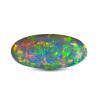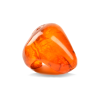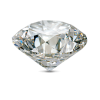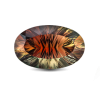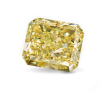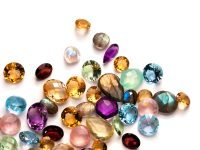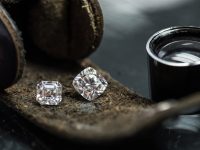Lapis Lazuli
Lapis is a beautiful rock; an aggregate of several minerals, mainly lazurite, calcite, and pyrite.
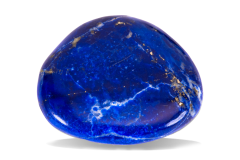
Lapis lazuli Description
Lapis lazuli is a rock, which means it’s an aggregate of several minerals. This ancient gem contains three minerals in varying amounts: lazurite, calcite, and pyrite. Sometimes, it also contains one or more of the following: diopside, amphibole, feldspar, and mica.
Lapis frequently contains varying amounts of whitish calcite matrix—the host rock that surrounds the gem—or flecks or veins of glinting yellow pyrite, or both. The gem can also have a smoothly uniform bodycolor, free of visible pyrite and calcite.
Lapis is semitranslucent to opaque, with a waxy to vitreous luster. It has fair toughness, and its hardness ranges from 5 to 6 on the Mohs scale, depending on the mix of minerals.
Gemstone Details
- Mineral: Rock
- Chemical composition: An aggregate
- Color: Greenish blue to violetish blue
- Refractive index: 1.500, sometimes 1.670
- Birefringence: None
- Specific gravity: 2.75 (+/- 0.25)
Lapiz Lazuli Gemstone as rough
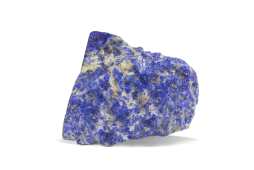
Variously described as indigo, royal, midnight, or marine blue, lapis lazuli’s signature hue is slightly greenish blue to violetish blue, medium to dark in tone, and highly saturated. In its most-prized form, lapis lazuli has no visible calcite, although it might have gold-colored pyrite flecks. If the flecks are small and sprinkled attractively throughout the gem, their presence doesn’t necessarily lower lapis lazuli’s value. The lowest-quality lapis looks dull and green, the result of an excess of pyrite. Lapis with white calcite streaks is less valuable.
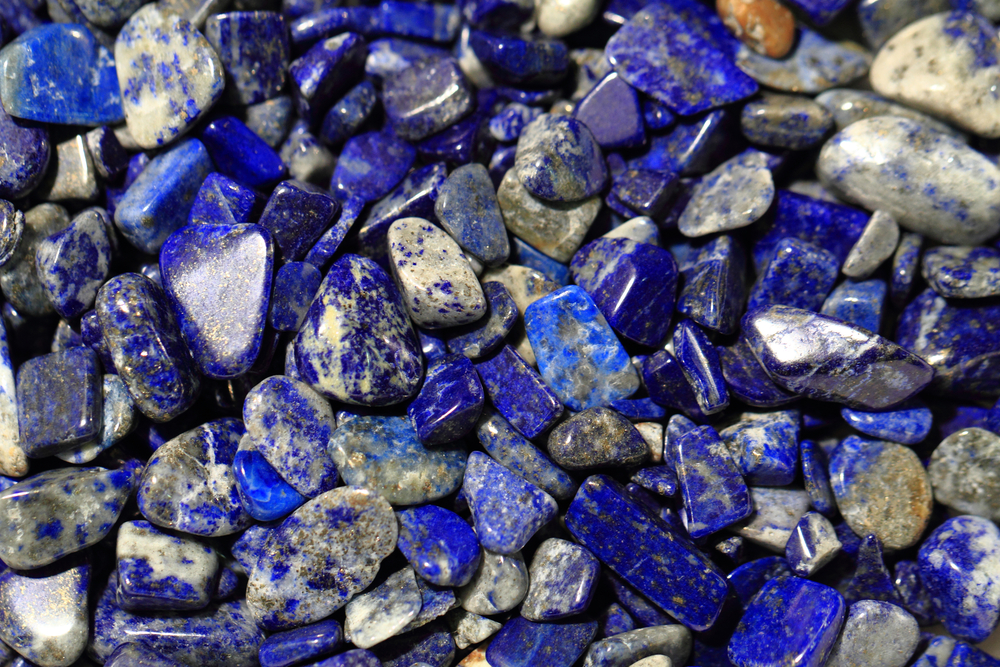
Although many people associate lapis with dark blue, it’s also found in other shades of blue, and even other hues. Its color can range from deep violet blue and royal blue to light blue to turquoise blue to a greenish blue. The combination of different minerals in the aggregate determines the color. For example, lazurite is responsible for producing royal blue lapis, while a mineral called afghanite creates a pale blue shade. Worldwide, lapis is mined in several areas.
The traditional source of the finest lapis lazuli is the same today as it was thousands of years ago—the mountains of Afghanistan. Other major sources are Chile and Lake Baikal in Siberia, Russia. Minor sources are Angola, Canada, Colorado (US), and Pakistan.
Lapis Lazuli History and Lore
Historians believe the link between humans and lapis lazuli stretches back more than 6,500 years. The gem was treasured by the ancient civilizations of Mesopotamia, Egypt, China, Greece, and Rome. They valued it for its vivid, exquisite color, and prized it as much as they prized other blue gems like sapphire and turquoise.
Badakshan, a province in present-day Afghanistan, is a forbidding wasteland of mountains, bare of any vegetation. The sheer mountain faces rise as high as 17,000 feet, and are scored with treacherous ravines. Humans make their way there to seek one thing only: the azure treasure that is fine lapis lazuli. The same was true as far back as 700 BC, when the region was part of a country known as Bactria.
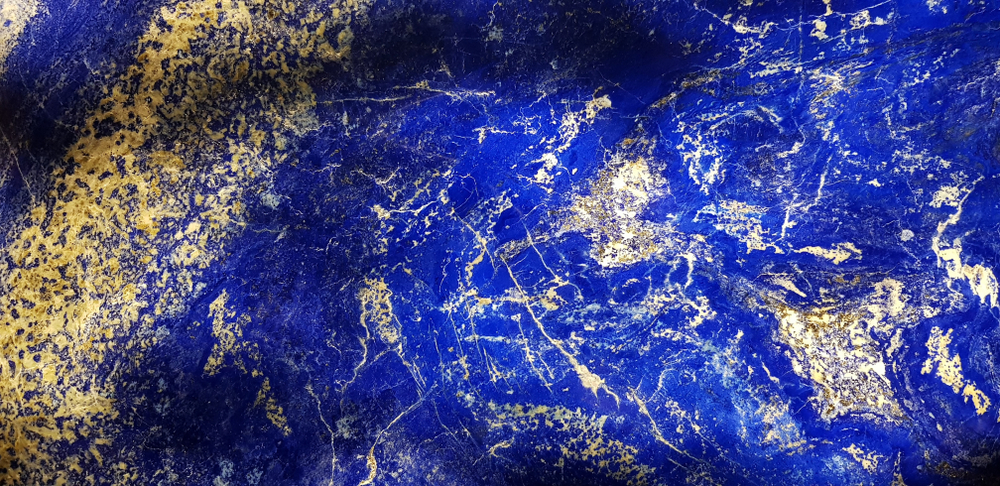
The lapis mines that were producing then are still producing today. They are, in fact, the world’s oldest known commercial gemstone sources.
Merchant caravans transported their precious blue cargo across Bactria, on their way to the great cities of the ancient Greeks, Indians, Egyptians, Mesopotamians, and Persians. Marco Polo referred to the area’s lapis mines in 1271, but few outsiders have seen them because of their inhospitable location.
For thousands of years, lapis has been fashioned to show off its rich, dark color. Typically, lapis used in jewelry has been cut into cabochons, beads, inlays, and tablets. But lapis lazuli’s use has never been limited to jewelry alone. It’s also a popular carving material. Throughout its history, lapis has been fashioned into practical objects, including game boards, bowls, dagger handles, hair combs, and amulets.
Today, lapis is frequently fashioned into freeform and nature-themed sculptures. Some of these carvings become wearable art, others are purely decorative.
Facts about Lapis Lazuli Gemstone
EXQUISITE COLOR
From ancient times to the present, many civilizations have prized lapis lazuli for its exquisite deep blue color.
6,500 YEARS
Scholars of ancient civilizations believe that the link between man and lapis lazuli stretches back beyond 6,500 years.
ULTRAMARINE
Renaissance painters used lapis to make “ultramarine” blue, an expensive pigment of unrivaled brightness and stability.
Quality Factors
COLOUR
The gem’s most-prized color is a uniform dark blue to violetish blue, without any visible calcite.
CLARITY
Top-quality lapis can display small, attractively distributed, gold-colored flecks of pyrite.
CUT
Lapis is typically cut into cabochons, beads, inlays, or tablets.
CARAT WEIGHT
Lapis rough can be large enough to fashion into decorative carvings.


